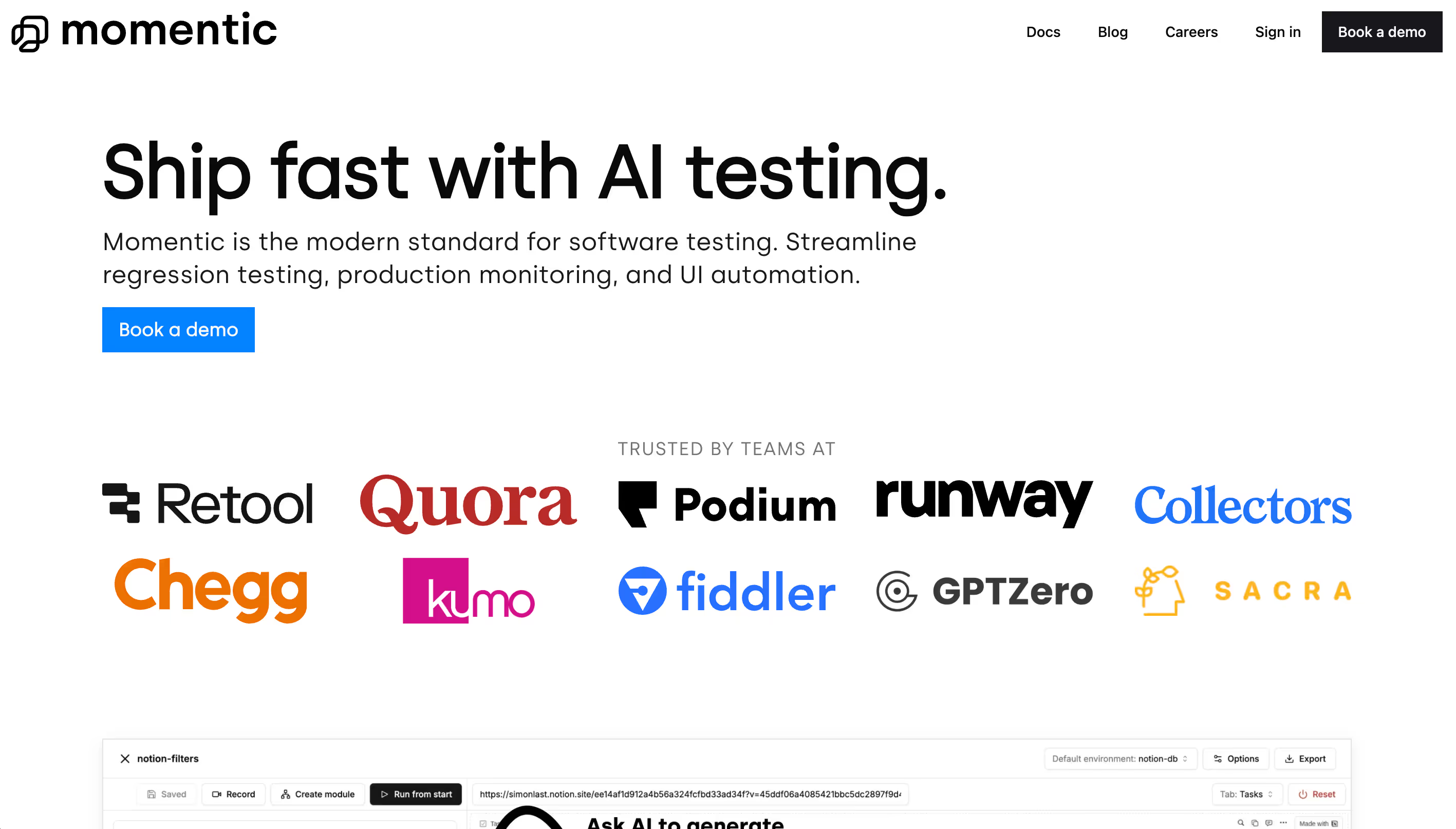
We envision a world where software testing is seamless, swift, and reliable, empowering development teams to innovate without barriers. At Momentic, we harness advanced AI to transform testing from a complex, error-prone task into an effortless, intuitive experience that scales with your product's ambitions.
Our mission is to eliminate the friction of traditional test automation by delivering a low-code platform that not only accelerates test creation but also adapts dynamically to evolving applications through self-healing capabilities. By embedding intelligence into every step of the testing lifecycle, we enable teams to deliver higher quality software with confidence and speed.
Through innovation and a deep commitment to quality, Momentic is redefining how software testing integrates into development workflows, fostering a future where developers and QA specialists collaborate effortlessly to ship exceptional products faster than ever before.
Our Review
We've been keeping an eye on automated testing startups for a while now, and Momentic caught our attention for all the right reasons. This isn't just another testing tool trying to reinvent the wheel — it's what happens when experienced engineers who've actually felt the pain of flaky tests decide to build something better.
The Frustration Factor That Built This
What we love about Momentic's origin story is how relatable it is. Founders Jeff An and Wei-Wei Wu didn't start this company because they saw a market opportunity — they built it because they were genuinely frustrated with existing testing tools at companies like Robinhood and Retool. That's the kind of authentic problem-solving that usually leads to great products.
When founders have personal battle scars from the problem they're solving, you know they understand the nuances. And boy, does the testing world need someone who gets those nuances.
Where the AI Actually Makes Sense
Here's what impressed us most: Momentic isn't just slapping "AI-powered" on a traditional testing framework and calling it innovative. They're using AI for the stuff that actually matters — like automatically handling element location, generating assertions, and creating self-healing tests that adapt when your app changes.
The "10x faster test creation" claim sounds like typical startup hyperbole, but when you dig into their low-code editor and natural language test generation, it starts to feel achievable. We're particularly intrigued by their self-healing tests feature, which could finally solve the flaky test problem that's plagued developers for years.
The Customer List Tells a Story
Sometimes you can judge a startup by the company it keeps. Momentic's customer roster includes names like Chegg, Quora, and Retool — not exactly small fish willing to experiment with unproven tools. These are companies with serious testing needs and the technical chops to evaluate solutions properly.
The fact that they've attracted hundreds of companies while still being less than two years old suggests they're solving a real problem, not just creating a solution in search of one.
Our Take on the Opportunity
With a fresh $3.7 million in seed funding and backing from solid investors like General Catalyst and Y Combinator, Momentic seems well-positioned to tackle the testing automation space. The timing feels right too — as development teams face pressure to ship faster while maintaining quality, the old "throw more QA engineers at it" approach just doesn't scale.
We're cautiously optimistic about Momentic's approach. They're tackling genuine pain points with thoughtful AI implementation, and their early traction suggests they're onto something. If they can deliver on their promise of making testing "easy, fast, and reliable," they could capture a significant slice of the developer tools market.
Feature
AI-native, low-code automated testing platform
Support for end-to-end (E2E), UI, API, and accessibility testing
Low-code test editor for 10x faster test writing
AI-assisted element location, assertions, and test case generation
Self-healing tests that adapt to app changes
Data capture including screenshots, accessibility info, network and console logs
Integration into local dev environments, CI/CD, and production monitoring
Natural language support for test creation
Intuitive interfaces for non-technical users








